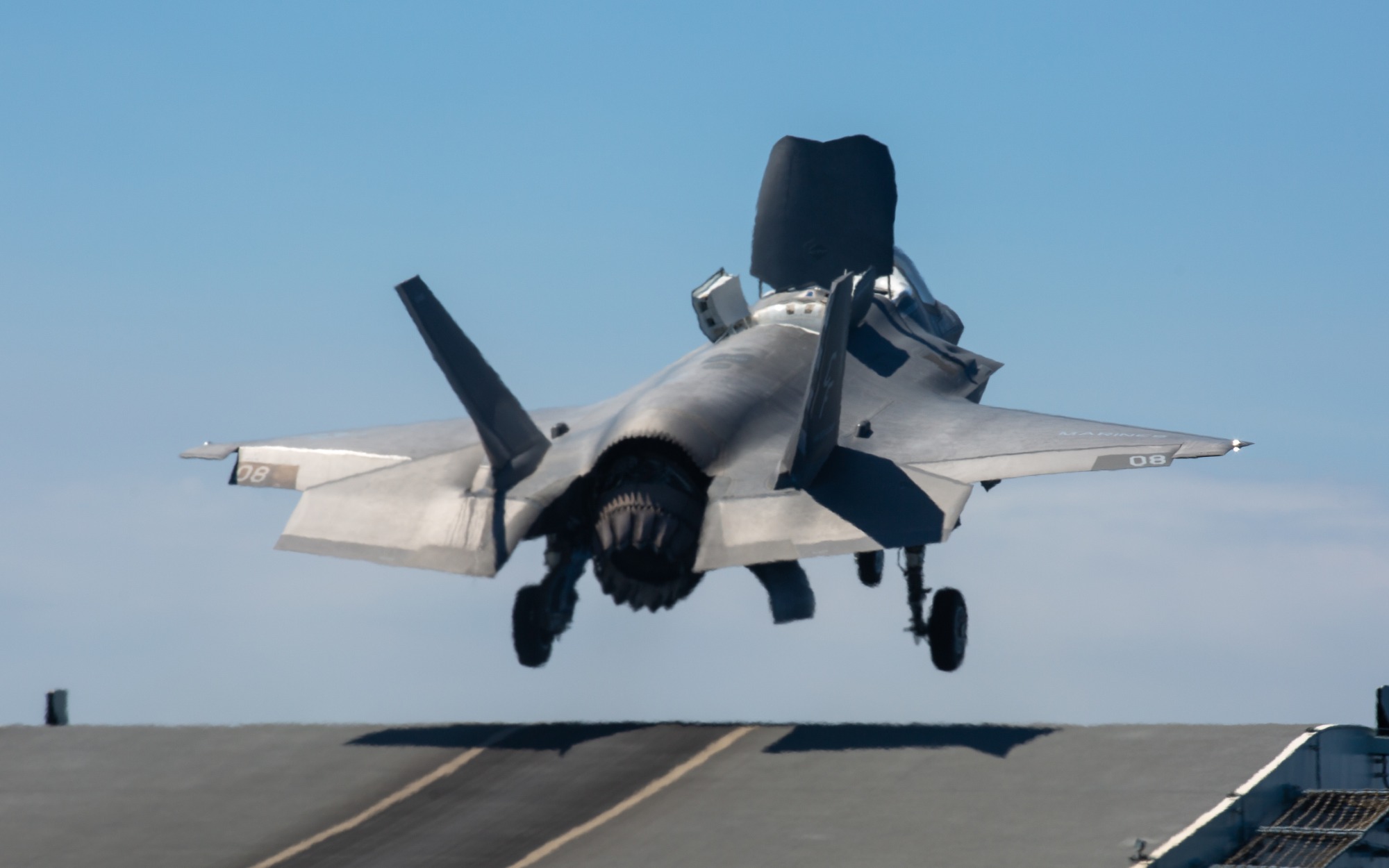The Royal Navy's Aircraft Carrier to Operate With F-35s in Drills Next Month
The UK's Royal Navy and Royal Air Force (RAF) are collaborating closely with their jointly operated Lockheed Martin F-35B Lightning IIs. These stealth fighters are critical to the UK Lightning Force, which includes RAF's 617 Squadron "The Dambusters" and 809 Naval Air Squadron "The Immortals."
Summary and Key Points: The UK's Royal Navy and Royal Air Force (RAF) are collaborating closely with their jointly operated Lockheed Martin F-35B Lightning IIs. These stealth fighters are critical to the UK Lightning Force, which includes RAF's 617 Squadron "The Dambusters" and 809 Naval Air Squadron "The Immortals."
-The F-35B, with its short takeoff and vertical landing (STOVL) capability, has proven versatile for both land and sea operations.
-The upcoming Exercise Strike Warrior will see F-35s from both squadrons aboard HMS Prince of Wales, the Royal Navy’s carrier and current NATO flagship, marking a key milestone for joint operations as the UK prepares for its global Carrier Strike Group deployment in 2025.
RAF and Royal Navy to Showcase Joint F-35 Operations in NATO's Strike Warrior Drills
Though United States Air Force aircraft have operated on rare occasions from U.S. Navy carriers, it is far from the norm. Today's U.S. Air Force fighters aren't designed or able to operate from the flattops – but the situation is different with the UK's Royal Navy, which does work more closely with the Royal Air Force.
In fact, the Lockheed Martin F-35 Lightning IIs that are employed by the UK Lightning Force are now jointly operated by the RAF and RN. The RAF's famed Number 617 Squadron "The Dambusters" and 809 Naval Air Squadron (NAS) "The Immortals" are both jointly manned by personnel from each service. Thus when the Royal Navy's Queen Elizabeth-class aircraft carrier HMS Prince of Wales – the current NATO flagship leads next month's Exercise Strike Warrior naval drills – it will embark both RAF and RN personnel.
"Strike Warrior will also see F-35s of the nascent 809 Naval Air Squadron go to sea for the first time operating from the carrier with 617 aircraft. The exercise will be a key building block in preparation for the global Carrier Strike Group deployment in 2025," Navy Lookout reported on Tuesday.
The Royal Navy Depends on the F-35
The first Lockheed Martin F-35B Lightning II arrived in the UK in June 2018, and the short takeoff and vertical landing ( STOVL) variant subsequently entered service with the Royal Air Force's (RAF's) near infamous 617 Squadron "Dambusters," while last December, the 809 Naval Air Squadron "The Immortals" was also reestablished to operate the fifth-generation stealth fighter.
As previously reported, 809 Naval Air Squadron – which was initially raised during the Second World War – was selected by the First Sea Lord, Admiral Sir George Zambellas, to receive the Lightning II because of its illustrious history as a strike and attack squadron.
The F-35B has been seen as providing greater versatility for the British military as the STOVL multirole fighter can operate from the Royal Navy's Queen Elizabeth-class aircraft carriers, as well as vessels of allied nations, but can also be deployed from airfields with short airstrips.
HMS Prince of Wales Has Been the Ultimate F-35 Test Platform
It was also nearly a year ago that the Royal Navy successfully completed its F-35 Lightning II fast jet Development Test Phase 3 (DT3) trials from the flight deck of the carrier off the coast of the United States. The UK's senior service been working to expand the operating limits of the fifth-generation stealth fighter to develop advanced takeoff and landing techniques, allowing the aircraft to launch with more weapons.
During the tests last fall, an American F-35B completed the first shipborne rolling vertical landings (SRVL) on the vessel's flight deck – during which, the aircraft landed on HMS Prince of Wales after approaching the ship from behind at speed, before using thrust from the aircraft's nozzle and lift created by air over the wings to touch down and gently come to a stop.

Previously, the Lightning II had only landed on the warship vertically, where it hovers by the side of the flattop before moving sideways and lowering onto the flight deck. Less than two weeks after reaching that milestone, another F-35B made the world's first night-time SRVL on a carrier.
During the same deployment, a pair of fully loaded F-35B Lightning II jets conducted an aerial sortie in "beast mode," the term aviators use to describe the fifth-generation stealth fighter when it carries a weapon on every pylon as well as in its internal bomb bay.
Each of the Lightning IIs carried an impressive 22,000 pounds of ordnance. The Royal Navy announced it was equivalent to the heaviest bomb carried by a World War II-era Avro Lancaster heavy bomber the Grand Slam or "Earthquake" bomb. It also nearly triples the bomb load of the UK's last carrier-based strike aircraft, the Harrier GR9.
Author Experience and Expertise: Peter Suciu
Peter Suciu is a Michigan-based writer. He has contributed to more than four dozen magazines, newspapers, and websites with over 3,200 published pieces over a twenty-year career in journalism. He regularly writes about military hardware, firearms history, cybersecurity, politics, and international affairs. Peter is also a Contributing Writer for Forbes and Clearance Jobs. You can follow him on Twitter: @PeterSuciu. You can email the author: [email protected].
Image Credit: Creative Commons and/or Shutterstock.


